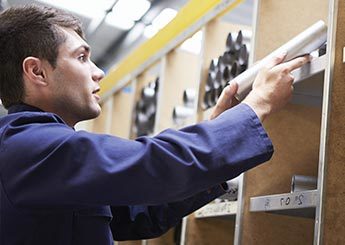Keep young workers safe
Inexperience and communication issues may put them at risk

Training
Employers must approach safety training differently for young workers, according to Jenny Leigh Houlroyd, project director for the Center for Young Worker Safety and Health at the Georgia Tech Research Institute. Young workers may not have much – or any – previous experience in a work environment, so what may seem like common sense to a seasoned employee may not be for a young one. For example, supervisors should tell young workers what they need to do in case a machine breaks down or if they spot a safety hazard in the workplace, she said.
Pechie also recommends that supervisors and safety professionals spend additional time during initial training for teens discussing cell phone use. They should explain when and where cell phones can and cannot be used, as well as the risks of using phones while performing safety-sensitive work.
Certain types of training may be more effective for teens, Houlroyd said, noting that hands-on learning exercises using props or actual equipment are especially helpful. For example, the Center for Young Worker Safety and Health at the Georgia Tech Research Institute provides a hearing loss demonstration in which students can interact with a mannequin to see how various levels of sound affect its hearing.
Video presentations can be effective means of teaching young workers about safety, Pechie said. Videos that may have an impact include ones showing young workers who have lost limbs or other body parts due to an incident in the workplace. “You see that video and that wakes you up,” Pechie said.
Houlroyd warned that young workers may not view videos seriously if the videos are a decade or more older.
“They will notice the eyeglasses look old, the hairstyles are different. It is amazing how that affects how they pay attention,” she said.
Family farms often recruit young family members to help complete work. According to NIOSH estimates, 955,000 youth lived on farms in 2012 – of those, 472,000 performed farm work. In addition, 259,000 youth were hired to work on farms.
Find more information about agricultural child labor laws.
Communication
Young workers may be hesitant to speak up or seek assistance when they feel unsafe or encounter a hazard, which could lead to a future injury, Pechie said. They may feel as though they have done something wrong and do not want to look incompetent in front of an adult authority figure, he said.
“They are trying to be in the adult world and on their own for the first time,” he said. “It may feel to them like they do not look good if they ask questions.”
In some instances, they may be afraid they will lose their paycheck if they point out a safety hazard, he added, which can be especially hindering to teens or young adults who work to help support their families.
To help young workers feel comfortable discussing safety at work, one possibility is a “buddy system,” Bush said. She pointed to Oakland Zoo in California where each new worker is paired up with an adult or peer who is more experienced. The new workers interact with these “buddies” regularly and typically feel more comfortable asking them questions, Bush said.
Even when workers do speak up when something is wrong, generational differences in communication styles can alter how young workers’ messages are received by older supervisors, Houlroyd said. She recalls an instance in which two young workers at a restaurant were injured by a work process and needed to inform one of their supervisors, who was offsite. They texted the supervisor – believing that it was the method of communication that carried the strongest sense of urgency – but the supervisor felt that the injury was not a serious concern because it was being communicated via text, and did not respond until later that day.
Engaging young workers
Bush said safety professionals must ensure supervisors are setting good examples, following the laws and using proper safety equipment. And Houlroyd encourages safety professionals to consider younger workers’ input to improve the safety culture of the workplace. “Bring the young workers to the table,” Houlroyd said. “They are young, energetic and engaged. They want to be part of the program. If they’re asked to participate, they likely will.”
The benefits of empowering young workers to be proactive about safety at work are twofold, Bush said. The workers likely will be safer and they will develop better critical-thinking and problem-solving skills regarding safety.
“Those critical-thinking skills are important for health and safety,” she said. “They will help protect themselves, and will help make things safer for everyone.”
Post a comment to this article
Safety+Health welcomes comments that promote respectful dialogue. Please stay on topic. Comments that contain personal attacks, profanity or abusive language – or those aggressively promoting products or services – will be removed. We reserve the right to determine which comments violate our comment policy. (Anonymous comments are welcome; merely skip the “name” field in the comment box. An email address is required but will not be included with your comment.)

